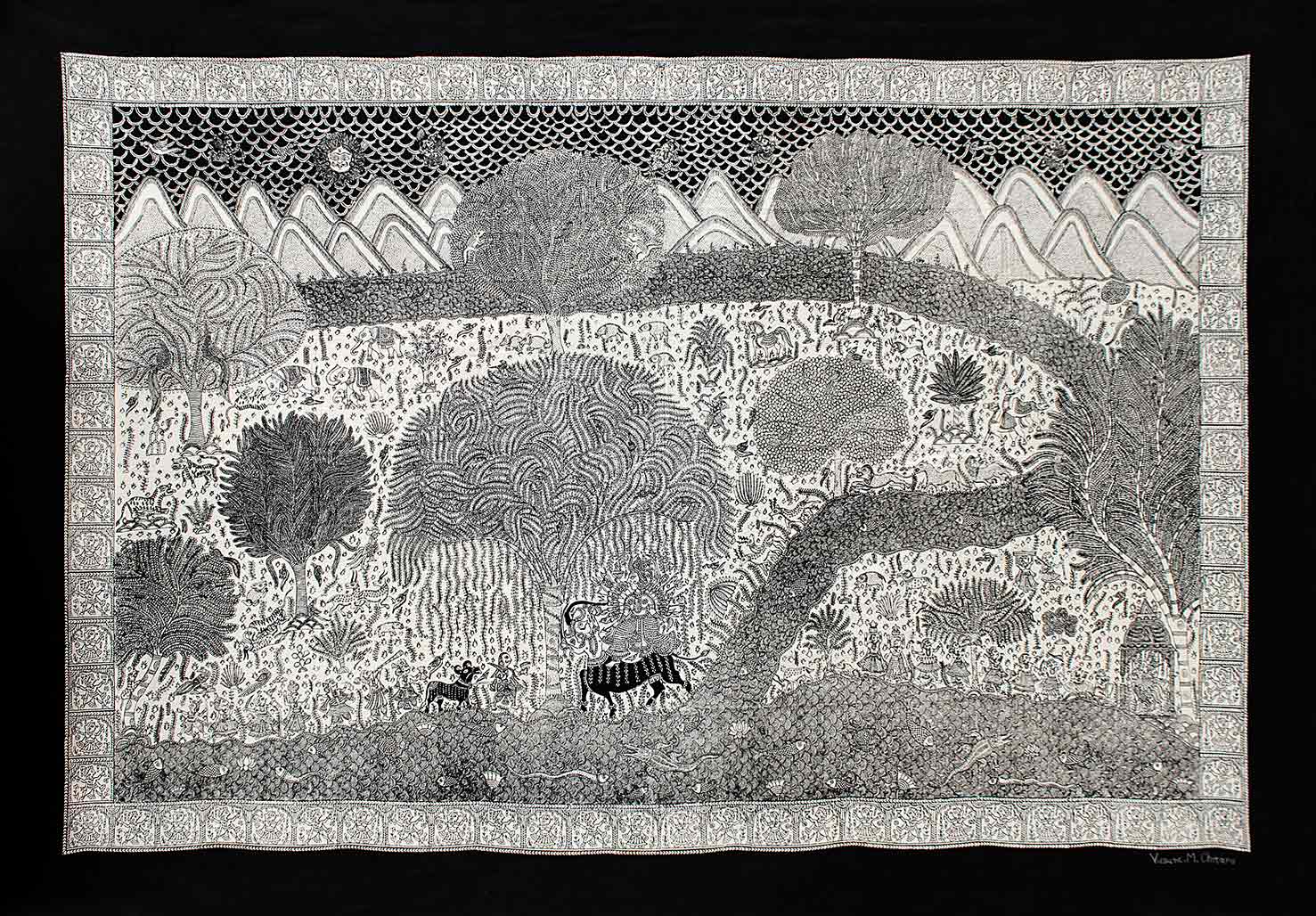

| Code | MNP16 |
| Artist Name | Vasant . M. Chitara |
For shipping with in India and out of India, the rates as per courier company charges will apply.
| Medium: | Natural dye colour on cloth |
| Size: | 44''X64'' |
| Location: | Delhi |
Mata-ni-Pachedi is a traditional art of painting the image of goddesses on a piece of cloth, comprising of multicolored animated images of gods and goddesses, devotees, followers, flora and fauna with a narrative story. The term Mata-ni-Pachedi in Gujarati, literally means behind the Goddess (Mata- ‘goddess’, ni- ‘belongs to’ and Pachedi- ‘behind’). When people of the nomadic Vaghari community of Gujarat were barred from entering temples, they made their own shrines with depictions of the Mother Goddess of different forms on to the cloth. Four to five pieces of Mata-ni-Pachedi are erected to form a shrine for the Mother Goddess. Traditional Mata ni Pachedi is a rectangular piece of fabric used as a canopy in the place of ceiling in a nomadic shrine which houses the main mother goddess image at its center. The rectangular fabric is divided into seven to nine columns followed by a narrative format which is made easier to interpret and impart the stories. Maroon (red) and black were the only colors used with the surface of the cotton material as the third color. Black is majorly used as the outlines for the icons and the motifs meant to repel malevolent spirits and intensify spiritual energy. White represents purity that contacts with ancestral spirits and deities, Maroon the color of blood (rakta) is associated with the goddess and believed to possess healing powers; Bhuvo or bhuva is the priest who performs the rituals, Jagorais the singers who interpreted the pachedis and Chitaras the artists who paint the shrine hangings. The Chitara community draws on the fabric and fills the images by hand. Central image and surrounding figures vary in size and position as per the artist’s creative imagination. According to the artisans, if the work is complicated, the entire family gets involved in the work- preparing the fabric, drawing and applying color, filling, boiling, washing etc. Children in the household slowly start joining the family profession and are involved in filling the colors and in all the activities done around them. Wooden blocks are eventually replaced for sharper drawings. Hand drawn Mata ni Pachedi are done side by side but it is more labour intense and more expensive than the block printed ones.
For shipping with in India and out of India, the rates as per courier company charges will apply.
 This artwork is accompanied by an Authenticity Certificate.
This artwork is accompanied by an Authenticity Certificate.
